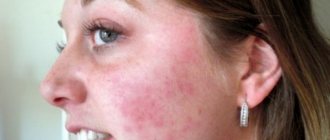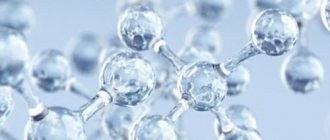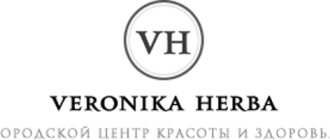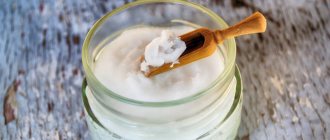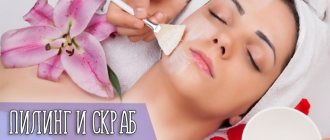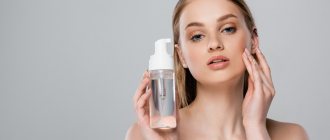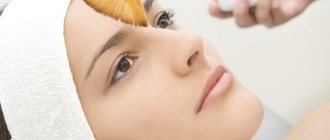What does acid treatment include?
Acid treatments involve exfoliating the top layer of skin using chemicals called hydroacids. They irritate the skin and damage epidermal cells, enhancing their regeneration. Acid treatments are designed to improve skin condition and reduce signs of aging - wrinkles and discoloration, as well as treat acne scars.
Acid peeling was known already in ancient times. Women used lactic acid for the face (in the form of sour milk) and grape, lemon or apple cider vinegar. These at-home chemical peels, however, did not always produce good results - their incompetent use led to bacterial infections and scarring during healing.
In modern cosmetology, acid treatments are carried out using alpha and beta acids, which, at concentrations below 5%, do not irritate the skin and provide a slight exfoliation effect.
Treatment using hydroacids stimulates epidermal renewal processes and can be used for all skin types. However, people with sensitive skin should choose lower concentration hydroxy acids.
Fruit acids in lower concentrations affect the skin primarily by moisturizing and regenerating, while fruit acids in higher concentrations cause exfoliation of the epidermis and restoration of a new superficial layer of skin.
Recovery period
After chemical peeling, the skin loses some of its protective functions for some time. In addition, feelings of discomfort and sometimes mild pain persist. In such conditions, it is very important to provide proper post-peeling care for the treated skin until it is completely regenerated.
The following main restoration measures are identified:
- Cleansing the skin. Cleansing milk is recommended for removing impurities from soft skin.
- Moisturizing and nourishing effect. Creams and gels are used that match your skin type.
- Protective measures. To enhance impaired protective functions, it is necessary to apply a cream or ointment with a sun protection factor of at least 30 SPF, as well as cosmetics with bacteriostatic and anti-inflammatory effects.
Types of cosmetic acids
Acid peeling is used to improve the appearance and condition of the skin, as well as improve skin tone. Cosmetic acids can be used for both dry and oily skin. When used correctly, the acid deeply moisturizes the skin, removes dead and damaged epidermal cells, stimulates cells in the deeper layers of the skin to restore the epidermis, making it smoother and the signs of aging less noticeable.
During acid treatment, the most commonly used acids are lactic, mandelic, citric and glycolic acids.
Acid peeling - before and after
Types of acids used in cosmetology:
- Alpha hydroxy acids (AHAs).
They have a moisturizing effect and stimulate the metabolism of skin cells. Treatments with fruit acids are recommended for dry, pale skin with acne. The group of alpha hydroxy acids includes: lactic, glycolic, citric, malic, tartaric and mandelic acids. - Beta hydroxy acids (BHA).
They have moisturizing, exfoliating, anti-inflammatory, whitening and antioxidant properties. They are recommended for pale skin with acne and signs of aging. At higher concentrations, these acids are irritating and may cause sensitization. The most commonly used BHA is Salicylic Acid. - Polyhydroxy acids (PHAs).
They have a moisturizing, anti-inflammatory and antioxidant effect. They are gentler than alpha hydroxy acids and non-irritating, making them suitable for tired, sensitive skin with discoloration and signs of aging. Examples of polyhydroxy acids are gluconolactone and lactobionic acid.
Benefits of almonds
The nut contains an acid of the same name, which has a beneficial effect on the epidermis. It has a number of positive properties:
- prevents the appearance of new rashes;
- nourishes the epidermis without clogging the pores;
- gives the skin a healthy glowing appearance;
- eliminates light expression wrinkles;
- has antiseptic properties;
- lightens age spots and smoothes out acne marks;
- tightens aging skin.
Thus, peeling cleanses the skin of dead cells, improving its regeneration and restoring the water-alkaline balance.
Effect of acids for chemical peeling
Each acid gives specific effects and requires a different recovery period after peeling:
| Acid | Result |
| Glycolic acid | Exfoliates and regulates the thickness of the top layer of skin and its color. Stimulates skin cells to synthesize collagen, thereby increasing its elasticity. With regular use, every 10-14 days, wrinkles become less noticeable. Exfoliation after using glycolic acid lasts 2 to 3 days. The skin turns red after peeling, and a burning sensation may also occur. After this time, the skin begins to regenerate, creating a new epidermis. |
| Mandelic acid | Stronger than lactic acid. Has an exfoliating and bactericidal effect. Can be used for all skin types. Also suitable for sensitive skin as it does not cause irritation. Effective for eliminating hyperpigmentation and acne scars. It also regulates sebum secretion and makes skin pores less noticeable. |
| Lactic acid | Has a moisturizing and exfoliating effect. |
| Lemon acid | In addition to exfoliating, it also has brightening properties. |
| Salicylic acid | The most popular beta hydroxy acid. It is gentler than fruit acids, but also exfoliates, moisturizes and restores the skin. |
| Hyaluronic acid | Used for procedures that moisturize the skin. In high concentrations it causes peeling of its top layer. Treatment with hyaluronic acid does not cause irritation, so it can be used for sensitive skin. |
| Alpha keto acids (AKAa), such as pyruvic acid. Polyhydroxy acids, for example gluconic and lactobionic acids. | They have a rapid superficial irritant effect, causing the skin to exfoliate and then recover. In addition, these acids have a brightening, anti-acne and bacteriostatic effect. |
| Pyruvic acid | Recommended for sensitive skin with signs of photoaging, discoloration and acne scars. |
| Azelaic acid, found in cereals. | It has a multidirectional effect and is used to treat seborrheic dermatitis, juvenile and rosacea, acne and papulopustular lesions. It has anti-inflammatory properties and blocks melanin production. Like other acid treatments, azelaic acid peels are recommended for skin with visible signs of aging. |
Indications and contraindications
It is imperative to conduct a skin reaction test. To do this, you need to apply a thin layer of the composition to a small area for 15 minutes and watch the reaction - if redness and irritation appear, you should not use this product.
Indications
- acne without active inflammation;
- disturbance of relief after acne;
- the appearance of small wrinkles;
- sagging and dryness;
- uneven complexion (pigmentation and acne spots);
- preparing the skin for medium peeling or laser resurfacing.
Contraindications
- pregnancy and lactation;
- allergy to mandelic acid;
- herpes and wounds.
How often to do and how many procedures are needed
You can see the expected effect after the first time, but to consolidate it and obtain long-term and sustainable results, you need a structural restructuring to occur, and for this you need a full course.
Almond peeling is a superficial procedure, the number of sessions per course is 6-10 times.
Frequency: one session every 7-14 days, no more often. And it is advisable to adhere to a clear schedule. The skin must be fully restored by the next time, and this takes time.
And remember that if suddenly you feel very uncomfortable during a session, and this causes a lot of negative emotions, it is better to postpone them until better times and not traumatize your psyche.
It is also necessary to take into account that if you have been actively sunbathing, you can start no earlier than in a month.
How is acid peeling done and how long does it take for the skin to heal?
Acid treatments are carried out either using one acid in the right concentration, or by mixing different types of acids. Acid peeling should be performed by an experienced cosmetologist, as the type and concentration of acid should be selected individually for the patient's skin.
Two weeks before the procedure, it is recommended to use a cream with a hydroxy acid, such as glycolic. This cream should also be used after the procedure.
Before the procedure, the cosmetologist protects areas of the facial skin that should not come into contact with acid, that is, around the eyes, lips and wings of the nose. Then the drug is applied to the skin with a brush and left for a time calculated by the doctor. The individual skin reaction is preliminarily checked.
The next stage is to neutralize the acid with a special preparation and leave it on the skin for several minutes. After this time, wash your face with warm water. Next, the cosmetologist applies a nourishing mask for 30
Acid treatments require the use of high UV filter creams and a protective cream for sensitive skin for at least 3-4 weeks.
The acid treatment should be repeated after approximately 14 days.
Home Recipes
Of course, here we are not talking about independent mixtures with mandelic acid, but about light peeling scrubs containing almonds. This is an affordable and safe way to cleanse your facial skin.
Option 1. Almond peeling scrub with oatmeal.
You will need 1 tablespoon each of ground almonds and oatmeal. Mix them with warm water until smooth. Apply to face for 10-15 minutes, rinse with massage movements.
By adding milk powder 1:1 to the mixture and replacing water with fresh sour cream, you can use this scrub for dry skin without the risk of damaging it.
Homemade peeling scrubs with almonds
Option 2. Peeling scrub with almonds and eggs with honey.
On cleansed skin, apply a mixture of 1 yolk, 1 teaspoon of ground almonds, 1 teaspoon of honey and 1 tbsp. spoons of camphor alcohol. After 10 minutes, remove the mask, it will come off as a film, wash with warm water.
Patient reviews
People have different opinions about almond peeling. Some believe that it has a positive effect on the condition of the skin, while others believe that it is ineffective.
The woman notes that the procedure is suitable for aging skin. After it, the face becomes tightened and wrinkles are smoothed out.
The girl believes that almond peeling is suitable for evening out the overall tone of the face, but the effect does not last long.
Women say that the procedure has a beneficial effect on the skin: it becomes smooth to the touch.
The procedure did not suit the girl: new pigment spots formed, wrinkles did not smooth out, and at first the acne symptoms worsened.
Thus, almond peeling helps to get rid of many problems. To achieve a positive result, it is necessary not only to perform the procedure, but also to choose the right facial care.
